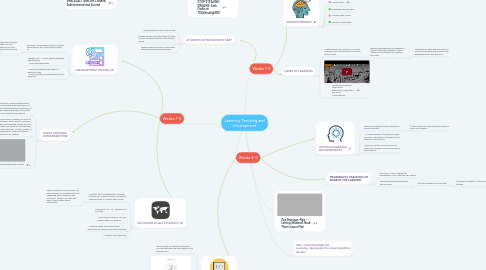
1. SOCIO-CULTURAL CONSIDERATIONS
1.1. Best practices to close the achievement gap: 1) demonstrate high expectations 2) implement culturally relevant instruction 3) establish caring relationships 4) effective parent and community involvement
1.1.1. There are not quick and easy fixes to the problem as each of these complex constructs must be considered depending on the situation you are in
1.2. We must: know our learners, be QUALITY type teachers, deliver quality curriculum, provide a good learning environment for all students, be flexible as a teacher and have other resources, include a variety of learning practices, varied assessment, evaluation and fair grading
1.3. The danger of a single story | Chimamanda Ngozi Adichie
2. STANDARDIZED TESTING
2.1. Examples of Standardized Tests in Canada: EQAO grade 3 & 6; literacy test in Grade 10
2.1.1. Original purpose is to assess effectiveness of instruction although they SHOULD: enhance teaching and learning, improve curricular design, and be the least intrusive as possible for students
2.2. Teachers can: • Convey positive attitudes about testing • Teach test-taking skills
2.3. • Familiarize students with types of questions used • Involve students in marking questions of each type
3. INCLUSION OF ALL STUDENTS
3.1. Students with "exceptionalities" includes: behavioural, communicational, intellectual, physical issues, or a mix of them as well
3.1.1. There is a push for "normalization" for these students by mainstreaming and integrating these students in the classroom--debate: does this help them or should they still be segregated?
3.2. Learning For All: • ALL students can succeed
3.3. • Each student has his or her own unique patterns of learning
3.4. • Universal design and differentiated instruction are effective and interconnected
3.5. • Fairness is not sameness
4. STUDENTS IN THE DRIVER'S SEAT
4.1. Learning should be seen as a journey
4.2. Engage learners by allowing them to make choices with which direction the learning will go
4.3. Teachers promote INQUIRY and look at themselves as professional learners
5. Weeks 4-6
6. Weeks 7-9
7. LEARNING STYLES
7.1. We can adapt our teaching methods to accommodate the way the majority of our students learn
7.2. How People Learn (HPL) Framework
7.3. EX: Visual Learners--have more posters, images, videos etc
7.3.1. EX: Auditory Learners--use of videos, audio clips, allow for oral communications and questions etc
7.3.1.1. EX: Kinaesthetic Learners--Provide a variety of learning centres, change of space, provide tactic tools for learning, etc
8. STOP STEALING DREAMS: Seth Godin at TEDxYouth@BFS
8.1. Teaching kids HOW to think and not WHAT to think
9. How EQAO Tests are Created, Administered and Scored
10. UDL: Universal Design for Learning--Necessary for some, beneficial for ALL
11. VIEWS OF LEARNING
11.1. Cognitive approach: emphasis on mental processes and understanding information and concepts
11.1.1. Behaviouralist approach: all behaviour is learned; observable behaviour can be measured in comparison to cognitive processes
11.1.1.1. Constructivist approach: learning is an active process where we construct our knowledge rather than acquire it
11.2. Teaching and Learning Approaches: Behaviorism, Cognitivism and Social Constructivism
12. GROWTH MINDSET
12.1. "I can't do this"
12.2. "Challenges help me grow"
12.3. "I stick to what I know"
12.4. "I like to try new things"
13. Weeks 1-3
14. POSITIVE LEARNING ENVIRONMENTS
14.1. Physical environment of the classroom is no less important
14.1.1. Which classrooms had a positive influence on you as a student?
14.2. Varied structures of classroom allows learning to take place in different spaces; supports differentiation
14.3. Learning is not the same for everyone, there is no "average" structure that will fit every student
15. MEANINGFUL TEACHING TO ENGAGE THE LEARNER
15.1. Discussion: How to engage the disengaged? TEACH the way they LEARN
15.2. Providing differentiated learning environments
15.2.1. a) Invites students to collaborate
15.2.1.1. b) Reflects a variety of cultures and home settings
15.2.1.1.1. c) Develops problem solving skills when teacher is helping other students

